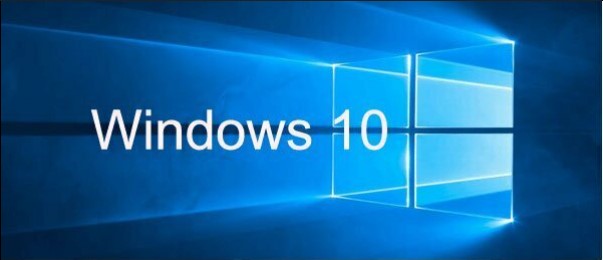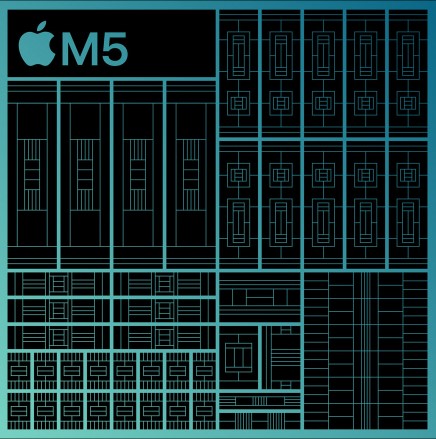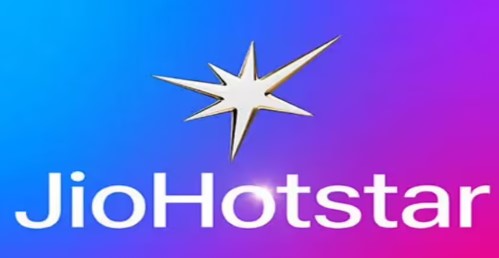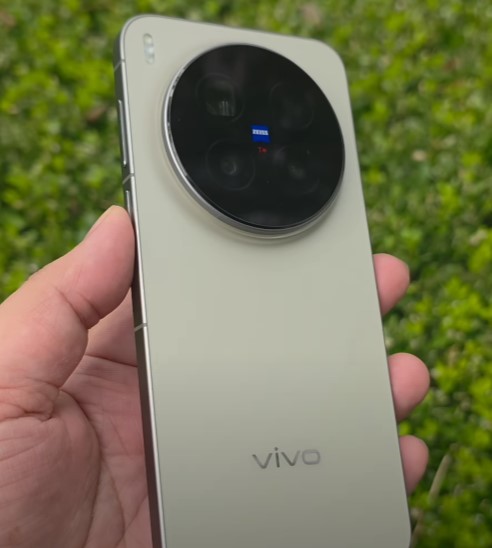The clock is ticking. On October 14, 2025, Microsoft pulls the plug on Windows 10, ending all security updates and plunging millions of PCs into a high-risk future. This isn’t just a simple software sunset; it’s a seismic shift in the digital landscape that affects over a billion users worldwide.
If you’re still clinging to Windows 10, you are standing on the edge of a cybersecurity cliff. But fear not. This definitive guide from AlienWeb is your lifeline. We will dissect the urgent reality of the Windows 10 end-of-life, unveil the powerful world of Windows 11, and map out your every possible move to ensure you remain secure, productive, and ahead of the curve.
Google CEO Thomas Kurian || AI’s 30% Code Revolution Empowers Tech Jobs – Empowering Vision
The Inevitable End: Why Windows 10’s Demise is a Digital Crisis
For nearly a decade, Windows 10 has been the bedrock of personal and professional computing. Since its 2015 launch, it has been maintained by a steady stream of updates—patches that fixed vulnerabilities, squashed bugs, and occasionally added new features. Come October 14, 2025, that stream runs dry.
What does “End of Support” truly mean? It’s a point of no return for your PC’s security. Microsoft will no longer issue critical security updates. Your computer, once a fortified castle, will slowly become a house of cards, vulnerable to every new virus, piece of malware, and cyber-attack that exploits newly discovered weaknesses.
The scale of this problem is staggering. Statcounter reported that as of July 2025, a massive 43% of Windows users were still on Windows 10. In the UK alone, consumer champion Which? estimates a shocking 21 million people are using the soon-to-be-obsolete OS. Even more alarming? Their survey found that a quarter of these users plan to continue using Windows 10 after support ends—a dangerous game of digital Russian roulette.
The backlash is fierce. Nathan Proctor, senior director at US PIRG, calls it a “disaster for both consumers and the environment,” forcing functional hardware into an early grave. In a world grappling with e-waste, Microsoft’s move feels like a step backwards. “We deserve tech that lasts,” Proctor rightly asserts.
Your Survival Blueprint: Three Critical Paths Forward
You have options. Ignoring the problem is not one of them. Here’s your strategic playbook, curated by AlienWeb.
Path 1: The Free Upgrade – Embrace Windows 11
If your PC is from the last five years, this is your most straightforward and cost-effective path. Microsoft offers a free upgrade to Windows 11 for eligible Windows 10 devices.
Is Your PC Ready? The Windows 11 System Requirements Decoded
Windows 11 has stricter hardware requirements. Before you proceed, ensure your machine meets these specs:
- Processor: A 1 GHz or faster 64-bit processor with 2 or more cores.
- RAM: 4 Gigabytes (GB) minimum.
- Storage: 64 GB or larger available storage.
- Firmware: UEFI with Secure Boot capability.
- Security: TPM (Trusted Platform Module) version 2.0.
- Graphics Card: DirectX 12 compatible with a WDDM 2.0 driver.
- Display: A high-definition (720p) screen larger than 9 inches.
You can check compatibility directly through Windows Update or use trusted third-party tools like the one from Which?.
Path 2: The One-Year Lifeline – Extended Security Updates (ESU)
Is your device too old for Windows 11? Don’t panic. Microsoft is offering a lifeline: the Extended Security Updates (ESU) program. This provides critical security patches for Windows 10 for an additional 12 months, until October 2026. Crucially, this does not happen automatically. You must opt-in.
How to Get Your ESU Lifeline:
- For Free (EEA): Residents of the European Economic Area get it free by simply registering.
- For Free (Global): If you update to the latest Windows 10 version, have a Microsoft account, and back up your PC settings to OneDrive, you can enrol for free.
- Paid Access: For everyone else, it’s a one-off fee of $30 (or £22), or you can redeem 1,000 Microsoft Rewards points.
This program is designed to buy you time—time to back up your data, research new machines, or plan your next move without immediate pressure.
Path 3: The Hardware Refresh – Invest in a New Windows 11 Laptop
Sometimes, the best solution is a clean start. Older hardware struggles to keep up with modern software demands, even with a new OS. Upgrading to a brand-new Windows 11 laptop guarantees optimal performance, modern features, and long-term support.
Look for devices labeled “Copilot+ PC” for the ultimate AI-powered experience. When purchasing, remember your rights: under the WEEE directive, retailers must help you dispose of your old computer responsibly when you buy a new one.
Beyond the Crisis: Unveiling the Power of Windows 11
Upgrading isn’t just about avoiding risk; it’s about embracing a significantly refined and powerful computing experience. Windows 11 is more than a new version; it’s a reimagining of the Windows ecosystem.
A Visual Revolution: The Redesigned User Interface
Windows 11 presents a clean, modern, and centered aesthetic that rivals the sleekness of macOS.
- Centered Taskbar: The Start button and pinned apps are now centered by default, creating a balanced and focused look (though you can left-align them if you prefer).
- Redesigned Start Menu: Gone is the live-tile chaos. In its place is a simplified, grid-based menu with pinned apps, recent files, and a powerful search bar.
- Rounded Corners and Softer Visuals: Every window, menu, and dialog box features soft, rounded corners and new animations, ditching the sharp edges of Windows 10 for a more fluid feel.
- New Themes and Wallpapers: A fresh set of wallpapers and deeply integrated light/dark modes with contrast options make personalization a breeze.
The AI Takeover: Microsoft Copilot and Intelligent Features
Windows 11 is an AI-native operating system. The integration of Copilot is a game-changer.
- Your Digital Companion: Activated by a dedicated key on new keyboards or Win+C, Copilot sits as a sidebar, ready to help you summarize documents, compose emails, adjust settings, or answer complex queries without leaving your app.
- AI in Creative Tools: The classic Paint app has received a massive AI infusion with features like Cocreator, which generates images from text prompts.
- The “Recall” Feature: On advanced “Copilot+ PCs,” Recall acts as a photographic memory for your digital life, allowing you to find anything you’ve seen on your PC using natural language.
Productivity Unleashed: Multitasking Made Effortless
If you’ve mastered multitasking on Windows 10, you’ll find Windows 11 elevates it to an art form. For users migrating from Windows 10, the transition to a more organized workflow is seamless. While Windows 10 was capable, managing a dozen open windows often felt chaotic. Windows 11 is the savior you need, building upon the foundation of Windows 10 with intelligent new systems. The skills you honed on Windows 10 are now supercharged with effortless organization.
Snap Layouts & Groups: Hover over a window’s maximize button to see a grid of layout options. Snap your windows into these layouts for an instant, organized workspace. Snap Groups remember these layouts, allowing you to minimize and restore the entire set with one click.
Virtual Desktops: Create separate desktops for Work, Gaming, and Personal use, each with their own open apps and backgrounds. Switching contexts has never been cleaner.
Enhanced Multi-Monitor Support: Windows 11 brilliantly remembers your window positions when you disconnect from a secondary monitor and restores them when you reconnect.
A Gaming Powerhouse: Performance and Visual Fidelity
Microsoft has squarely targeted the gaming community with significant under-the-hood improvements.
DirectStorage: This technology allows games to load assets directly from your NVMe SSD to the GPU, bypassing the CPU bottleneck. The result? Drastically reduced loading times and larger, more detailed game worlds.
Auto HDR: Automatically adds High Dynamic Range (HDR) enhancements to DirectX 11 and 12 games that were built with Standard Dynamic Range (SDR), making colors pop and brights/darks more dramatic on supported HDR monitors.
Xbox Integration: The Xbox Game Pass subscription service is deeply integrated, giving you instant access to a massive library of games for a monthly fee.
Fortress-Level Security: Built-In Protection from the Ground Up
Windows 11 was designed with today’s threat landscape in mind. Its strict hardware requirements are not arbitrary; they are foundational to its security model.
TPM 2.0 Mandate: The Trusted Platform Module is a dedicated crypto-processor that secures hardware through integrated cryptographic keys. It’s essential for features like Windows Hello and BitLocker.
Secure Boot: Prevents malicious software from loading when your PC starts up.
Windows Hello: Provides seamless and secure biometric authentication via fingerprint or facial recognition.
Microsoft Account Integration: While controversial for privacy advocates, requiring a Microsoft account for Home editions enables features like cross-device syncing and enhances security through account recovery options.
Navigating the Transition: Your Step-by-Step Upgrade Guide
Ready to make the leap from Windows 10? Here’s how to get Windows 11 safely.
Backup Everything: Before any major system change, use an external hard drive or cloud service to back up your crucial files, photos, and documents.
Check Compatibility: Go to Settings > Update & Security > Windows Update and check for updates. If your PC is eligible, the Windows 11 upgrade offer will appear. You can also use the “PC Health Check” app from Microsoft.
Choose Your Installation Method:
- Windows Update (Easiest): If offered, simply download and install like a regular update. Your files and apps will be preserved.
- Installation Assistant: For more control, download and run the Installation Assistant from the Microsoft website.
- Media Creation Tool (Clean Install): For the purest experience, use this tool to create a bootable USB drive. This will perform a fresh install, wiping your drive in the process. Ideal for new PCs or removing clutter.
Answering Your Burning Questions: The Windows 11 FAQ
Is Windows 11 still available for free?
Yes, for eligible Windows 10 PCs, the upgrade remains free.
Is Windows 12 available yet?
No. As of late 2025, Microsoft has not officially announced Windows 12. The company’s focus is squarely on Windows 11 and the AI-powered “Copilot+ PC” initiative.
Is Windows 11 better than Windows 10?
Overwhelmingly, yes. It offers a more modern interface, superior multitasking tools, stronger foundational security, and better gaming performance. The AI features alone make it a significant leap forward.
Will Windows 11 slow down my PC?
On hardware that meets the system requirements, Windows 11 is optimized to run as well or better than Windows 10. Older, underpowered hardware may experience slowdowns.
Can I go back to Windows 10 from Windows 11?
Yes, but only for a limited time. After upgrading, you have 10 days to revert to Windows 10 through the Settings > System > Recovery menu. After that, a clean install of Windows 10 would be required.
Can I run Android apps on Windows 11?
Yes! Through the Amazon Appstore, available via the Microsoft Store. You can also use third-party emulators like BlueStacks (which is free) for a wider selection of APKs, though side-loading APKs directly in Windows 11 has limitations.
Thinking Outside the Microsoft Box: Powerful Alternatives
If you’re disillusioned with Windows, this is a perfect time to explore.
- Linux (e.g., Ubuntu, Linux Mint): A free, open-source OS famous for its stability and privacy. Modern distributions are surprisingly user-friendly. Ideal for developers and privacy-conscious users, though it may not support all commercial software and games.
- ChromeOS Flex: A lightweight, cloud-centric OS from Google that can breathe new life into old laptops. Perfect if your computing is primarily done in a web browser.
Frequently Asked Questions (FAQs)
- Is Windows 11 still available for free?
Yes, the free upgrade from Windows 10 to Windows 11 is still available for eligible PCs that meet the minimum system requirements. - Is Windows 12 available yet?
No, Microsoft has not officially announced Windows 12. Their current focus is on Windows 11 and the AI-powered “Copilot+ PC” ecosystem. - Can I go back to Windows 10 from Windows 11?
Yes, but you only have a 10-day grace period to easily revert through the Recovery settings. After that, a clean install of Windows 10 is required. - Which version of Windows is best?
For security and modern features, Windows 11 is the best choice for most users. Sticking with an unsupported Windows 10 is a significant security risk.
- What’s new about Windows 11?
Windows 11 introduces a centered, modern UI, AI Copilot, powerful Snap Layouts for multitasking, enhanced gaming with DirectStorage, and stronger security mandates like TPM 2.0. - Can I run Android apps on Windows 11?
Yes, via the Amazon Appstore integrated into the Microsoft Store. For wider access, you can use the free emulator BlueStacks. - Can we install APK in Windows 11?
Direct side-loading of APKs is limited. The intended method is through the Amazon Appstore. BlueStacks remains the best way to run a wide range of Android APKs. - How to install Play Store on Windows 11?
The Google Play Store is not natively supported. You can access Android apps through the Amazon Appstore or by installing a full Android subsystem using third-party methods.
- Is Windows 11 better than Windows 10?
Overall, yes. It offers a more modern interface, superior multitasking tools, stronger foundational security, and better gaming performance, making it a worthy upgrade. - Will Windows 11 slow down my PC?
On hardware that meets the system requirements, it should run smoothly. Slowdowns typically occur on older, unsupported hardware or due to incompatible drivers/software after an upgrade. - Why is my laptop slow after installing Windows 11?
Common causes include outdated drivers, background processes re-indexing files, or incompatible software. Check for updates in Windows Update and your device manufacturer’s website. - How much RAM is needed for Windows 11?
The minimum is 4GB, but 8GB is highly recommended for comfortable multitasking and performance. - Is 32GB RAM overkill for Windows 11?
For most users, yes. However, it’s beneficial for hardcore gamers, video editors, software developers, and those running multiple virtual machines. - What processor is needed for Windows 11?
You need a 1 GHz or faster 64-bit processor with at least 2 cores. A compatible 8th Gen or newer Intel CPU, or AMD Ryzen 2000 series or newer is typically required. - Why is Windows 11 shutting down?
This could be due to overheating, a faulty power supply, corrupted system files, or an automatic update. Run the Windows System File Checker tool (sfc /scannowin Command Prompt) to diagnose issues.
- Is 8GB USB enough for Windows 11?
Yes, an 8GB USB drive is the minimum size required to create installation media using the Media Creation Tool. - What is the life expectancy of Windows 11?
Microsoft has announced a support end date of October 2031 for the Home/Pro editions, giving it a 10-year lifecycle from its 2021 release. - How to install Google on Windows 11?
Google Chrome isn’t pre-installed, but you can easily download it. Open the Microsoft Store, search for “Chrome,” or visit the official Google Chrome website directly from the new Edge browser. - Is Playstore available for PC?
Not natively on Windows. The Google Play Store is designed for Android devices. On a PC, you access Android apps via the Amazon Appstore on Windows 11 or by using an emulator like BlueStacks. - Can you install Android on a PC?
Yes, through methods like the Windows Subsystem for Android (on Windows 11) or by using a full Android emulator like BlueStacks, which is free.
The Final Verdict: Upgrade, Don’t Hesitate
The end of Windows 10 is not a suggestion; it’s a hard deadline. Continuing to use an unsupported OS is an unacceptable security risk in an era of sophisticated cyber-attacks.
Windows 11 is not merely a necessary upgrade; it is a genuine evolution. Its sleek design, AI-powered intelligence, productivity-enhancing tools, and robust security framework make it the most compelling Windows release in years.
Your mission is clear. Check your PC’s compatibility today. Either claim your free Windows 11 upgrade, secure your one-year ESU extension, or invest in a new machine that will carry you confidently through the next decade. The future of your digital life depends on the decision you make now.
Stay secure, stay productive, and welcome to the next generation. Welcome to Windows 11.



